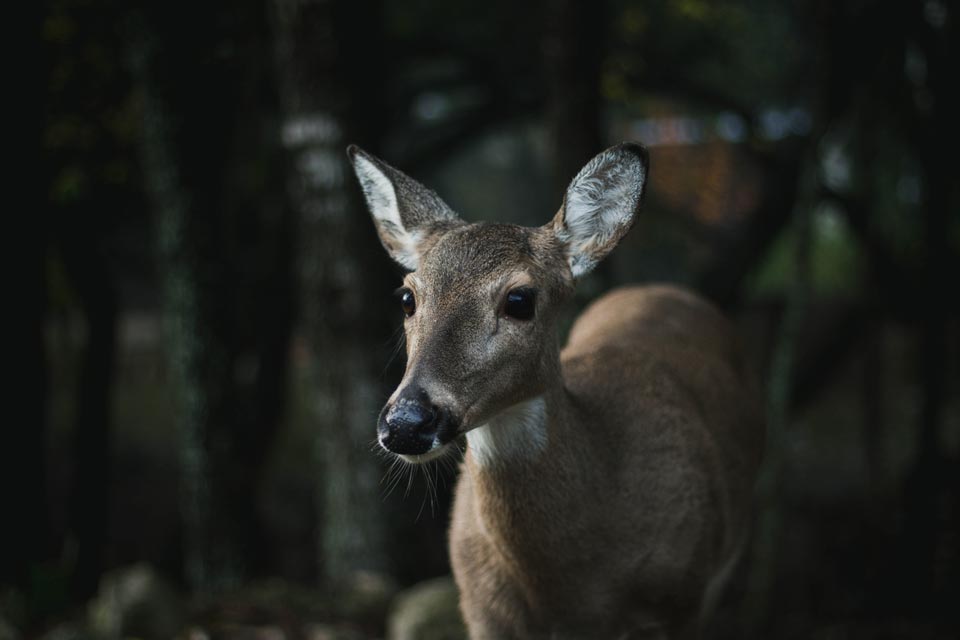Whether you’re planting a food plot, flower beds, or your garden, you’ll want to make sure you have seeds and live plants on order so they arrive in plenty time for spring thaw and planting season.
That’s why some companies are already sending out catalogs! 
I plant a garden every year— usually beans, squash, carrots, tomatoes, peppers, and broccoli. I also throw in the occasional experiment (I tried watermelon last year). I buy my seeds from the local hardware store and greenhouse, and usually avoid catalogs.
This year I thought I’d at least take a look. Perhaps I’d find a new garden experiment.
I was shocked when I opened the page and found most of what they were selling was non-native. (To be fair, most of your garden vegetables aren’t native, but these are used for food—so they get a bit of a pass). Some of the catalog’s stock, like Autumn olive (Elaeagnus umbellta) is actually labeled invasive by the USDA because it displaces native plant species.
Now, for those of you unfamiliar with the distinction between “non-native” and “invasive” here are their definitions:
Non-native: A species found living outside it’s natural (native) range, introduced by humans (either accidentally or deliberately) to a new range
Invasive: A species found living outside it’s natural (native range), introduced by humans (either accidentally or deliberately) to a new range where it causes damage to the environment, human health, or other species
The difference between them is the difference between a bully and the kid that behaves on the playground. What makes a species a bully? Species introduced to new places escape the natural checks and balances they have back home – pushing and shoving the neighborhood kids around. Some species, however, don’t seem to cause as many problems as others. Predicting what species will become invasive is nearly impossible.
Why am I making a big deal out of a catalog? If we can’t predict what’s going to be a problem, should we be concerned with companies selling plants that aren’t normally found in Pennsylvania?
Absolutely
WITHOUT A DOUBT
YES!
Remember the chestnut blight? The fungus that causes the blight made its way over to the US in the early 1900’s on Japanese nursery stock.
Did that beautiful ash tree in your back yard have to be cut down last year? You can thank the Emerald Ash Borer—native to Asia—for that.
What about the oaks in your woodlot? Have they had a European gypsy moth infestation?
This says nothing about the hundreds, if not thousands, of species of plants that have produced seed and “escaped” planted gardens over the last 100 years. Without any checks on population growth, many of these species become established in woodlots, reducing plant diversity and habitat quality for wildlife. Just ask my grandpa—our hunting grounds in Ohio are overrun with both Amur and Japanese honeysuckle (Lonicera maackii and Lonicera japonica, respectively).
It’s not all doom and gloom. You can do your part to help preserve habitat and stop the spread of invasives. How you ask?
First and foremost, get informed. There are plenty of resources online that cover the impact of invasives and how you can work to stop their spread. One of the best resources is USDA APHIS’s Attack of the Invasive Species.
Second, plant native! The Pennsylvania DCNR has a link on their website to iConservePA which has a great section on “planting smart”. Avoid planting things from catalogs or box stores if the species’ native range is outside the US. If its origin isn’t listed (they usually aren’t), a quick search of the scientific name online will usually give you the answer.
Lastly, tell your neighbors! Most people who plant some of the worst invasive offenders (e.g. Japanese barberry (Berberis thunbergii), Autumn olive, Amur honeysuckle) did so because they didn’t know about the damage caused by invasives before they planted. A simple conversation with friends and family will go a long way in preventing future planting of non-native and invasive plants.
Ph.D. graduate student
If you would like to receive email alerts of new blog posts, subscribe here.
And Follow us on Twitter @WTDresearch
p.p3 {margin: 0.0px 0.0px 10.0px 0.0px; font: 11.0px ‘Trebuchet MS’; -webkit-text-stroke: #000000; min-height: 12.0px}
span.s3 {text-decoration: underline ; font-kerning: none}
